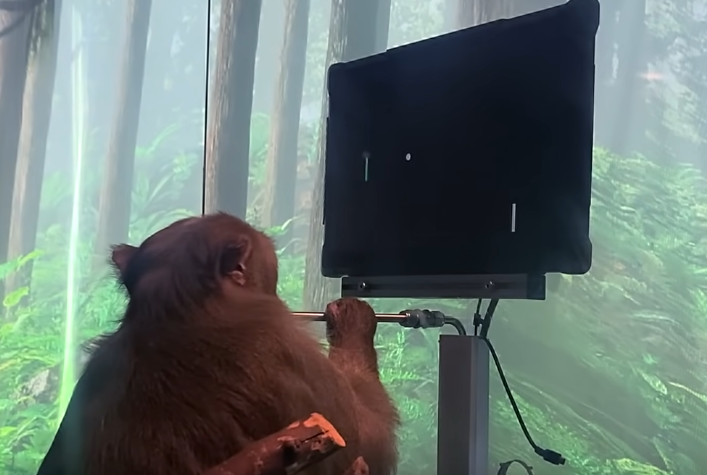The Neuralink YouTube channel (which is apparently a thing that exists) released a demo of their technology using Pager, a nine year old Macaque monkey.

Video Overview
In the video, Pager plays two games using a joystick. For the first, he moves a cursor to an orange square in a grey grid, then moves it to the next square to pop up. For the second, he plays his favorite game, Pong.
While he plays, the Neuralink team have been analyzing the neural activity in his brain using a Neuralink implanted in his brain. They are able to receive data in realtime, and figure out which patterns of activity correspond to each hand movement.
The voiceover states that "After only a few minutes of calibration, we can use the output from the decoder to move the cursor instead of the joystick". The team then unplugs the joystick and has Pager play. Pager is then able to just think about moving his arm, and is able to play Pong using his mind.

Implications
First of all, Neuralink was launched 1 year ago, and we already have monkeys playing games with their mind. I predict with 70% confidence that, within a year, Neuralink will be placed in a human and will have basic functionality. If I'm wrong, I think it'll mainly be because of Neuralink not being legally allowed to conduct a human trial, or due to long term safety concerns as opposed to short term ones.
Neuralink is cool and very hyped, but I also think this is more subtle and perhaps even cooler: Facebook bought a company which creates a wrist based human interface device. They claim that they can sense hand & finger position from the signals detected from a specialized wrist strap.
Given how much expertise humans have in fine motor control of their hands, and the astonishing generalizeable capability our hands have displayed (in sports, writing, crafts, fighting), I am optimistic about a wrist based input device becoming common place, simply because there is no onerous requirement of surgery.
I suspect that the first use case will be like the monkey example, except where humans type on a phantom keyboard, and from there people will start learning entirely new ways to communicate using only hands - possibly as their primary interface to any computer.
Woah, just on a watch-like device! How far along is this technology?